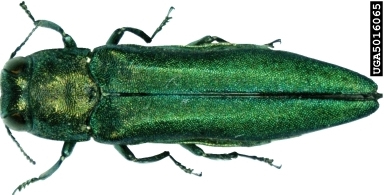
Press Release January 29, 2018
Areas Regulated for Emerald Ash Borer Expanded to Include the City of Winnipeg
To slow the spread of emerald ash borer into new parts of Canada, the Canadian Food Inspection Agency
(CFIA) is expanding areas regulated to control emerald ash borer to include the City of Winnipeg in
Manitoba.
Effective immediately, the movement of ash materials, including logs, branches and woodchips, and all
species of firewood from the affected sites is restricted. If you need to move regulated articles such as
ash logs and branches or firewood of any species out of the EAB regulated areas, please contact your
local CFIA office to request written authorization.
Because emerald ash borer can spread across long distances, the public can play a key part in helping to
control the spread of emerald ash borer by not moving potentially infested materials.
Although the emerald ash borer poses no threat to human health, it is highly destructive to ash trees. It
has already killed millions of ash trees in Ontario, Quebec and the United States, and poses a major
economic and environmental threat to urban and forested areas of North America. The CFIA continues
to work with federal, provincial, and municipal government partners to slow the spread of this pest.
Quick facts
- The emerald ash borer is native to China and eastern Asia. Its presence in Canada was first confirmed
in 2002. - Prior to this finding in Winnipeg, the emerald ash borer has been known to be present in Canada only
in certain areas of Ontario and Quebec. - The CFIA establishes regulated areas to restrict the movement of potentially infested plants and
wood items to new areas where the pest has not been found. - Emerald ash borer has killed a significant number of ash trees in Canada and the United States and
has cost tens of millions of dollars to home owners, governments, and industry.
Additional information
- Additional information on the emerald ash borer and the CFIA’s, ‘Don’t Move Firewood Campaign’
may be found on the CFIA’s website at www.inspection.gc.ca/pests. - Natural Resources Canada’s website has a guide for detecting EAB damage, which is available at
http://cfs.nrcan.gc.ca/pubwarehouse/pdfs/26856.pdf
Members of the public are asked to report any EAB sightings to the CFIA through its website at www.inspection.gc.ca/pests
